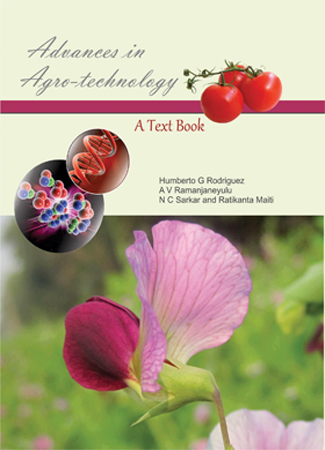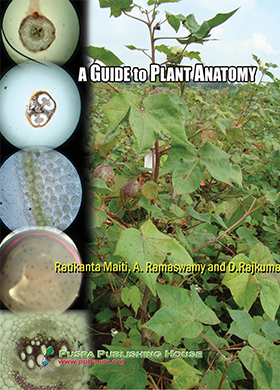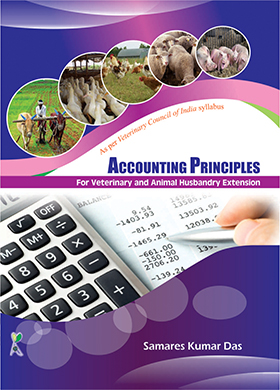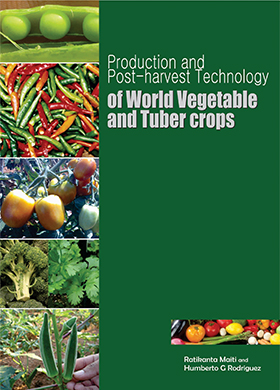Reference :1
Adetiloye, P.O., Ezedinma, F.O.C., 1983. A land equivalent co-efficient (LEC) concept for the evaluation of competitive and productive interactions in simple to complex crop mixture. Ecological Modelling 19, 27–39.
Alexander, M.W., Genter, C.F., 1962. Production of corn and soybeans in alternating pairs of rows. Agronomy Journal 54, 233–234.
Anitha, S., Prema, A., Helen, S., Raji, P., 2001a. 11th Swadeshi Science Congress, 6th to 8th November 2001 KFRI, Peechi- 9.
Anonymous, 2016a. Estimates of area and production of maize in India-2015–16. Ministry of Agriculture and farmer welfare, Government of India.
Anonymous, 2016b. Estimates of area and production of maize in West Bengal-2015-16. Ministry of Agriculture and farmer welfare, Government of India.
Choudhary, S.K., Singh, R.N., Singh, U.P.K., Choudhary, P.R., Pal, V., 2014. Effect of vegetables intercrops and planting pattern of maize on growth, yield and economics of winter maize (Zea mays L.) in Eastern Uttar Pradesh. Environment and Ecology 32(1), 101–105.
Choudhary, S.K., Singh R.N., Upadhyay, P.K., Singh, R.K., Yadav, R.I., Choudhary, H.R., 2014. Growth and available nutrient in winter maize (Zea mays L.) with vegetable intercrops in eastern Uttar Pradesh. The Bioscan 9(1), 151–154.
CIAT (Centro International De Agricultura Tropical), 1986. Principles of intercropping with beans. In: Davis, J., Smithson, J.B. (Eds.) - CIAT, Cali, Colombia-5.
Dadarwal, R.S., Jain, N.K., Singh, D., 2009. Integrated nutrient management in baby corn (Zea mays). Indian Journal of Agricultural sciences 79(12), 1023−1025.
Dahmardeh, M., Ghanbari, A., Syahsar, B.A., Ramrodi, M., 2010. The role of intercropping maize (Zea mays L.) and Cowpea (Vigna unguiculata L.) on yield and soil chemical properties. African Journal of Agricultural Research 5(8), 631–636.
De Wit, C.T., 1960. On competition. Verslaglandbou Cokundige Onderzock 66(8), 1–82.
Dhima, K.V., Lithourgidis, A.A., Vasilakoglou, I.B., Dordas, C.A., 2007. Competition indices of common vetch and cereal intercrops in two seeding ratio. Field Crop Research 100, 249–256.
Donald, C.M., 1963. Competition among crop and pasture plants. Advances in Agronomy 15, 1–18.
Ghanbari, A., Dahmardeh, M., Siahsar B. A., Mahmoud, R., 2010. Effect of maize (Zea mays L.) - cowpea (Vigna unguiculata L.) intercropping on light distribution, soil temperature and soil moisture in arid environment. Journal of Food, Agriculture & Environment 8(1), 102–108.
Gomez, K.A., Gomez, A.A., 1984. Statistical procedures for agricultural research. An International Rice Research Institute Book (2nd Edn). Wiley-Inter-Science Publication, JohnWiley & Sons, New York.
Hall, R. L., 1974. Analysis of the nature of interference between plants of different species I. concept and extension of the De wit analysis of examine effects. Australian Journal of Agriculture Research 25, 749–56.
Hiebsch, C.K., 1980. Principles of intercropping effects on nitrogen fertilization, plant population and crop duration on equivalency ratios in intercrop versus monoculture comparisons. Ph.D. dissertation. North Carolina State University, Raleigh, North Carolina, U.S.A.
Himmatrao, M.S., Raghavaiah, R., Kadasiddappa, M., Soumya, B., 2014. Influence of row ratio and Zinc nutrition on yield, nutrient uptake and soil fertility status of maize (Zea mays) - soybean (Glycine max) intercropping systems under rainfed conditions. Environment and Ecology 32(1), 169–173.
Jackson, M.L., 1967. Soil chemical analysis. Prentice Hall of India Pvt. Ltd; New Delhi -183–408.
Jeet, S., Singh, J.P., Kumar, R., 2017. Production potential and nutrient uptake of QPM hybrids as influenced by nitrogen and sulphur fertilization. Journal of Agriculture Search 4, 27–30.
Kermaha, M., Angelinus, F.C., Samuel, A.N., Ahiabord, B., Robert, D.K., Abaidooc, C., Gillera Ken, E., 2017. Maize-grain legume intercropping for enhanced resource use efficiency and crop productivity in the Guinea savanna of northern Ghana. Field Crops Research 213, 38–50.
Kheroar, S., Patra, B.C., 2014. Productivity of maize-legume intercropping system under rainfed situation. African Journal of Agriculture Research 9(20), 1610–1617.
Kolawole, G.O., Guanglong, T., Singh, B.B., Tian, G.I., 2000. Effect of nutrient management on cowpea. Journal of Plant Nutrition 23(6), 731–740.
Kumar, R., Saini, J.P., Sharma, S.K., Seth, M., 2017. Influence of cereal-legume combination and sources of nutrients on productivity and profitability under organic production system. Indian Journal of Agronomy 62(3), 275–279.
Kumar, A., Guatam, R.C., Singh, R., Rana, K.S., 2005. Growth, yield and economics of maize (Zea mays)–wheat (Triticum aestivum) cropping sequence as influenced by integrated nutrient management. Indian Journal of Agriculture Science 75(11), 709–711.
Li, L., Yang, S.C., Li, X.L., Zang, F.S., Christie, P., 1999. Inter-specific complementary and competitive interaction between intercropped maize and faba bean. Plant Soil 212, 105–14.
Lithourgidis, A.S., Dordas, C.A., Damalas, C.A., Vlachostergios, D.N., 2011. Annual intercrops: an alternative pathway for sustainable agriculture. Australian Journal of Crop Science 5, 396–410.
Mahapatra, A. Barik, A.K., Mishra, G.C., 2018. Integrated nutrient management on baby corn (Zea mays L.). International Journal of Bio-resource and Stress Management 9(1), 044–048.
Mandal, M.K., Banerjee, M., Banerjee, H., Alipatra, A., Malik, G.C. 2014. Productivity of maize (Zea mays) based intercropping system during kharif season under red and lateritic tract of West Bengal. The Bioscan 9(1), 31–35.
Mc gilchrist, C.A., 1965. Analysis of competition experiment. Biometrics 21, 975–985.
Meena, O.P., Gaur, B.L., Singh, P., 2006. Effect of row ratio and fertility levels on productivity, economics and nutrient uptake in maize (Zea mays L.) and soybean intercropping system. Indian Journal of Agronomy 51(3), 178–182.
Misra, B.N., Singh, B., Rajput, A.L., 2001. Yield, quality and economics as influenced by winter maize (Zea mays) - based intercropping system in eastern Uttar Pradesh. Indian Journal of Agronomy 46(3), 425–431.
Mohan, H.M., Chittapur, B.M., Hiremath, S.M., Chimmad, V.P., 2005. Performance of maize under intercropping with grain legumes. Karnataka Journal of agricultural Sciences 18(2), 290–293.
Naresh, R.L., Singh, S.P., Kumar, P., Singh, B., Singh, P.K., Chauhan, P., Rathore, R.S., 2014. Sustainability of maize (Zea mays L.)- wheat (Tricticum aestivum) system under legumes intercropping and effect of nitrogen level on light distribution, soil temperature and crop productivity. Indian Journal of Agriculture Science 84(6), 695–701.
Ojiem, J.O., Franke, A.C., Vanlauwe, B., De Ridder, N., Giller, K.E., 2014. Benefits of legume–maize rotations: assessing the impact of diversity on the productivity of smallholders in Western Kenya. Field Crop Research 168, 75–85.
Padhi, A.K., Panigrahi, R.K., 2006. Effect of intercrop and crop geometry on productivity, economics, energetic and soil fertility status of maize (Zea mays) based intercropping system. Indian Journal of Agronomy 51(3), 174–177.
Pathak, K., Singh, N.P., 2008. Growth and yield of blackgram (Phaseolus mungo) varieties under intercropping system with maize (Zea mays) during rainy season in Northern India. Journal of Farming Systems Research and Development 14(1), 29–34.
Patra, B.C., Mandal, B.K., Padhi, A.L., 2000. Production potential of winter maize (Zea mays L.)– based intercropping systems. Indian Journal of Agricultural Science 70(4), 203–206.
Piper, C.S., 1950. Soil and Plant Analysis. Academic Pres, New York.
Ram, P., Sreenivas, G., Leela Rani, P., 2017. Impact of sustainable weed management practices on growth, phenology and yield of rabi grain maize (Zea mays L.). International Journal of Current Microbiology and Applied Sciences 6, 701–710.
Rana, R.S., Singh, B., Nagi, S.C., 2001. Management of maize/legume intercropping under Mid Hill sub-humid conditions. Indian Journal of Agriculture Ressearch 35(2), 100–103.
Rusinamhodzi, L., Corbeels, M., Nyamangara, J., Giller, K.E., 2012. Maize-grain legume intercropping as an attractive option for ecological intensification that reduces climatic risk for smallholder farmers in central Mozambique. Field Crop Research 136, 12–22.
Sangakara, U.R., Frehner, M., Nosberger, J., 2001. Effect of potassium fertilizers on cowpea under water stress condition. Journal of Agronomy and Crop Science186 (2), 73–81.
Satyajeet, R.K., Nanwal, K., Yadav, V.K., 2007. Effect of integrated nutrient management in nitrogen, phosphorus and potassium concentration, uptake and productivity in pearl millet. Journal of Maharastra Agricultural Universities 32,186–188.
Sawargaonkar, G.L., Shelke, D.K., Shinde, S.A., Shilpa, K., 2008. Performance of kharif based legumes intercropping systems under different fertilizer doses. International Journal of Agricultural Sciences 4(1), 152–155.
Sharma, A., Sharma, J.J., Rana, M.C., Sood, S., 2006. Evaluation of Phaseolus vulgaris as intercrop with vegetables for enhancing productivity system and profitability under high hill dry temperate conditions of north-western Himalayas. Indian Journal of Agricultural Sciences 76(1), 29–32.
Sharma, A.R., Behera, U.K., 2009. Recycling of legume residues for nitrogen economy and higher productivity in maize (Zea mays)-wheat (Triticum aestivum) cropping system. Nutrient Cycling in Agro ecosystems 83(3), 197–210.
Sharma, P.B., Singh, V.B., 2008. Productivity and economic viability of different intercrop combinations in Tawa command area. Advances in Plant Sciences 21(2), 441–442.
Shivay, Y.S., Singh, R.P., Kumar Shiva, B.G., 2002. Effect of nitrogen on yield attributes, yield and quality of maize (Zea mays) in different cropping system. Indian Journal of Agriculture sciences 72(3), 161–163.
Sinha, A.K., 2017. Effect of sowing schedule and integrated nutrient management on productivity, profitability and soil health in rainfed baby corn (Zea mays)-horse gram (Macrotylo mauniflorum) cropping sequence. Indian Journal of Agronomy62(4), 417–423.
Singh, V.P., Singh, V.K., 2001. Productivity potential and economics of maize (Zea mays) and soybean (Glycine max) intercropping patterns under rainfed low hill or valley situation of Uttaranchal. Indian Journal of Agronomy 46(1), 27–31.
Singh, D.P., Rana, N.S., Singh, R.P., 2000. Growth and yield of winter maize (Zea mays) as influenced by intercrops and nitrogen application. Indian Journal of Agronomy 45(3), 515–519.
Suroshe, S.S., Chorey, A.B., Thakur, M.R., 2009. Productivity and economics of maize-based intercropping systems in relation to nutrient management. Research on Crops10(1), 38–41.
Swaminathan, M.S., 1998. Crop production and sustainable food security. In: Chopra, V.L., Singh, R.B., Verma, A., (Eds). Crop productivity and sustainability- Shaping the future. Proceeding of the (2nd Eds.). International Crop Science Congress, New Delhi, India, 3–18.
Takim, F.O., 2012. Advantages of maize-cowpea intercropping over sole cropping through competition indices. Journal of Agriculture and Biodiversity Research 1(4), 53–59.
Vandermeer, J.H., 1989. The ecology of intercropping. Cambridge, UK: Cambridge University Press. 237.
Walky, A., Black, I.A., 1934. An Examination of the degtjareff method for determining Soil organic matter, and a proposed modification of the chromic acid titration method. Soil Science 34, 29–38.
Willey, R.W., 1979. Intercropping- its importance and research needs. Part 1: Competition and yield advantages. Field crop abstract 32, 1–10.
Willey, R.W., 1990. Resource use in intercropping systems. Agriculture Water Management 17, 215–231.
Willey, R.W., Rao, M.R., 1980. A competitive ratio for quantifying competition between intercrops. Experimental Agriculture 16, 117–125.
Willy, R.W., Osiru, D.S.O., 1972. Studies on mixture of maize and beans with particular reference to plant population. Journal of Agriculture Science 79, 579–529.
Yilmaz, S., Atak, M., Erayman, M., 2008. Identification of advantages of maize-legume intercropping over solitary cropping through competition indices in the East Mediterranean Region. Turkey Journal of Agriculture 32, 111–119.
Zhu, Y., Chen, H., Fan, J., Wang, Y., Li, Y., Chen, J., Fan, J., Yang, S., Hu, L., Lueng, H., Mew, T. W., Teng, P.S., Wang, Z.C.C., 2000. Genetic diversity and disease control in rice. Nature 406, 718–22.



.jpg)
.jpg)






